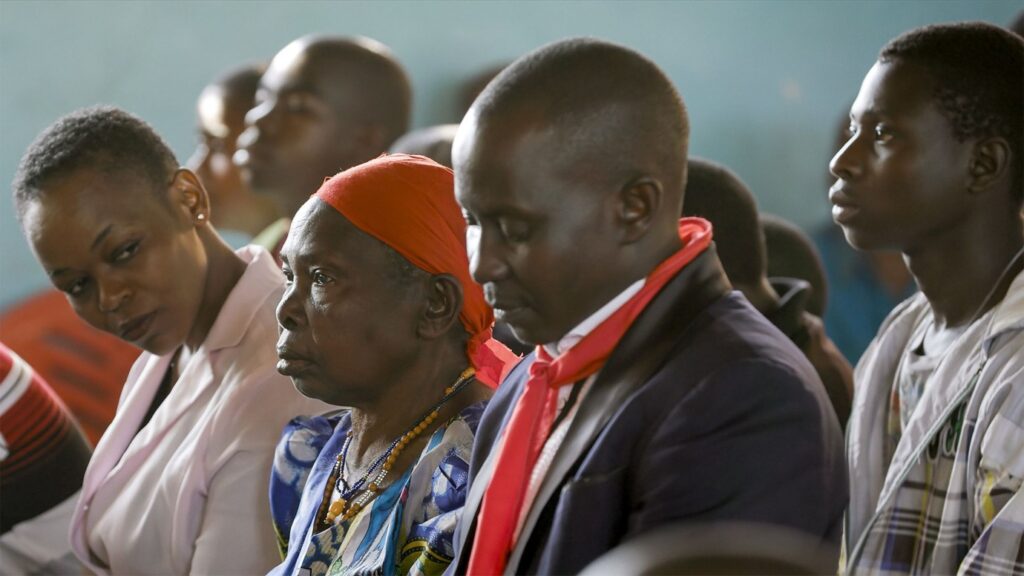“The Empty Grave” is a documentary that confronts the viewer with the enduring legacy of colonialism, a subject that remains fraught with emotion, controversy, and an urgent need for resolution. Directed by Agnes Lisa Wegner and Cece Mlay, this poignant narrative follows the Mbano and Kaaya families in Tanzania as they seek to repatriate the remains of their ancestors taken to Germany and the United States respectively, for “racial science” research during the colonial era. The personal stories of these families are set against the backdrop of tens of thousands of human remains still kept in German museums and universities, a backdrop of historical trauma and the contemporary struggle for justice and identity.
At the film’s core are the stories of the Mbanos and the Kaayas—families separated by distance but united in a shared, relentless pursuit of justice. The Mbanos’ hunt for the remains of Songea Mbano, severed from his burial place and shipped to Germany for scientific racism, is an odyssey marked by bureaucratic stonewalls and the crushing blow of a DNA test that negates their hopes. The Kaayas’ yearning to retrieve Mangi Lobulu from the American Museum of Natural History mirrors this sentiment of anguished hope. These narratives are more than just plotlines; they are the embodiment of a centuries-old struggle for dignity and recognition.
The documentary extends its narrative to Germany, unearthing a legacy of colonialism that pervades the streets named after perpetrators and the museum halls housing stolen artifacts. There, activism and advocacy form another critical facet of “The Empty Grave.” In Berlin, we meet Mnyaka Sururu Mboro who challenges the culture of denial prevalent in Germany regarding its colonial past. He embodies the struggle for justice in the very land that sanctioned the atrocities, and his story runs parallel to the Mbanos’ and Kaayas’ — one seeking restitution on foreign soil, the other on native land.
The Kaaya family’s ongoing efforts to bring home Mangi Lobulu from the American Museum of Natural History underscore the global nature of this struggle, extending the film’s reach beyond the German context.
The film’s power lies in its ability to juxtapose the personal with the political. By featuring Mboro’s activism in Germany, “The Empty Grave” connects the past injustices of colonialism with the present struggles against racism and the legacy of figures such as Carl Peters, a German colonial ruler notorious for his oppressive regime and cruel treatment of native populations in East Africa during the late 19th century.

Through the stories of the Mbano and Kaaya families, the documentary transcends individual narratives to comment on broader issues of historical injustice and the cultural importance of ancestral remains. It underscores the gravity of a community’s right to honor and mourn its ancestors according to its traditions, which have been disrupted by colonial practices.
The documentary’s storytelling is distinguished by its minimalist aesthetic, which aligns with the gravity of its subject matter. “The Empty Grave” employs a stark, unembellished style that allows the varied Tanzanian landscapes, the people, and their lived experiences to speak for themselves. The documentary juxtaposes the beauty of the land with the gravity of their historical struggle. This visual sparsity serves as not merely an aesthetic choice but a narrative device that highlights the absence of ancestors and the void left in the families’ histories.
The ceremonial gatherings at Songea Mbano’s grave, where the family seeks forgiveness from their ancestor for not being able to bring him home, are particularly moving. This cultural aspect of the film resonates with the viewer, providing a visceral understanding of what is at stake in the repatriation process.
One harrowing aspect of the documentary is its exploration of the bureaucratic and institutional challenges that the families face, marked by fleeting hopes and repeated disappointments, reflecting the complex and often disheartening journey that many such families undertake. It is a testament to the intricate and often frustrating process of tracing and identifying remains that were stripped of their identities and treated as mere objects of curiosity.

The film extends its gaze to include the educational aspect of this historical issue. Scenes set in Tanzanian and German institutions, where students learn about the Majimaji War and reflect on the inhumanity of the past, serve as a reminder of the importance of historical literacy. By incorporating these scenes, the documentary emphasizes the role of education, especially of the youth, in shaping the collective consciousness and in fostering a sense of responsibility towards the past, with an eye towards the future.
International collaboration and representation are also significant themes within “The Empty Grave.” The co-directors’ backgrounds—one from Germany and the other from Tanzania—bring a nuanced perspective to the film, bridging the gap between the countries involved in this historical dialogue. This cross-cultural effort is indicative of the collaborative nature required to address and heal the wounds of colonialism.
“The Empty Grave” is a documentary that speaks to the soul. It demands of its viewers an emotional and intellectual engagement with the material realities of colonial plunder. The film’s conclusion is a resounding refusal to offer closure, both to the families it portrays and to the viewers who bear witness to their plight. The film’s epilogue is not just an update; it is a sobering reminder that the struggle for reparative justice is far from over, and a clarion call that underscores the vast scale of the problem.
It is a conclusion that will hopefully leave the viewer with a sense of urgency and a deep understanding of the emotional and cultural significance of repatriation.
Co-produced by Tanzanian production company Kijiweni Productions, THE EMPTY GRAVE (KABURI WAZI) makes its world premiere in the Berlinale Special section of the 74th Berlin International Film Festival.